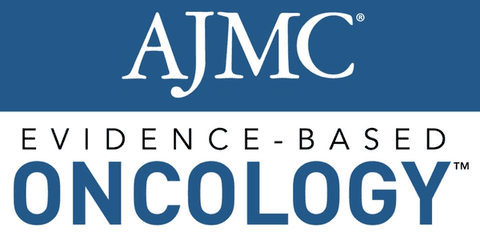Article
CAR T-Cell Therapy Improves Health-Related QOL in Adult Patients With R/R DLBCL
Author(s):
Health-related quality of life (QOL) improved in 54% of patients 18 years or older with relapsed/refractory diffuse large B-cell lymphoma (R/R DLBCL) after therapy with tisagenlecleucel (Kymriah; Novartis), one of 2 FDA-approved chimeric antigen receptor (CAR) T-cell therapies. The patients’ general health, vitality, physical function, and social function improved the most.
A majority of patients (54% [95% CI, 43%-64%]) with relapsed/refractory diffuse large B-cell lymphoma (R/R DLBCL) who were evaluated for health-related quality-of-life (HRQOL) improvements after receiving a single infusion of tisagenlecleucel (Kymriah; Novartis), one of 2 FDA-approved chimeric antigen receptor (CAR) T-cell therapies, had significant improvements in their general health, vitality, physical function, and social function. This was the conclusion reached by an international team of researchers, with these preliminary results from the JULIET (Study of Efficacy and Safety of CTL019 in Adult DLBCL Patients) global, single, open-label, phase 2 trial appearing in a recent issue of Blood Advances from the American Society of Hematology.
This population consisted of patients 18 years or older with R/R DLBCL following 2 or more lines of therapy who also had a failed autologous stem cell transplant (ASCT) or were deemed ineligible for ASCT. Their HRQOL was measured through the Functional Assessment of Cancer Therapy-Lymphoma (FACT-Lym) and Short Form-36 (SF-36) Health Survey, at baseline screening and at months 3, 6, 12, and 18. The lower the score, the worse the HRQOL. The data cutoff was May 21, 2018, by which time 115 patients had been infused with tisagenlecleucel, and the median follow-up was 19 months.
Overall, 40% of these patients also achieved a complete response (CR), and the 54% (15/28) who had an initial partial response (PR) eventually had a CR. The median duration of response was not reached (95% CI, 10.0 months—not evaluable [NE]); however, patients 65 years or older and those younger than 65 years had similar durations of response. In addition, median overall survival was 11.1 months (95% CI, 6.6 months-NE), but was not reached in patients with a CR (95% CI, 21.1 months-NE). Cytopenias longer than 28 days (34%), cytokine release syndrome (23%), infections (19%), febrile neutropenia (15%), and neurologic events (11%) were the most common adverse effects, and all were deemed manageable.
The HRQOL responses to the questionnaires were as positive. Per FACT-Lym, there was an overall improvement in HRQOL from the baseline screening through month 18, as well as in the patients with a CR or PR (n = 57), with the greatest improvement seen at month 18 for functional, physical, and social/family domains. And after the SF-36 was administered, a positive mean change was seen overall, signifying meaningful improvements in HRQOL. Measurements at months 3, 6, 12, and 18, in particular, showed increases above the minimally clinically important differences for general health, vitality, physical functioning, role-physical, and social functioning.
Broken down at each HRQOL assessment timepoint, the questionnaire completion rates were as follows:
- Baseline: 94% (108/115)
- Month 3: 76% (47/62)
- Month 6: 81% (35/43)
- Month 12: 86% (31/36)
- Month 18: 65% (22/34)
“Many patients with this advanced level of disease become depressed and withdraw, but here patients reported improved functional status, physical capabilities, and ability to interact with people,” stated Richard Maziarz, MD, of Oregon Health & Science University School of Medicine, and the study’s lead author. “As we progress in our capacity to offer therapies to treat cancers, we have to ask: is it enough to just have our patients in remission or alive, or do we want them to be able to truly live again, and to re-enter society with full function?”
Going forward, the study authors suggest adding the Patient-Reported Outcomes Measurement Information System to future CAR T-cell trials, as well as establishing optimal times at which to measure HRQOL following this gene therapy, especially because of the dearth of HRQOL data on patients with R/R DLBCL.
Reference
Maziarz RT, Waller EK, Jaeger U, et al. Patient-reported long-term quality of life after tisangenlecleucel in relapsed/refractory diffuse large B-cell lymphoma. Blood Adv. 2020;4(4):629-637. doi: 10.1182/bloodadvances.2019001026.
2 Commerce Drive
Suite 100
Cranbury, NJ 08512
© 2025 MJH Life Sciences® and AJMC®.
All rights reserved.




